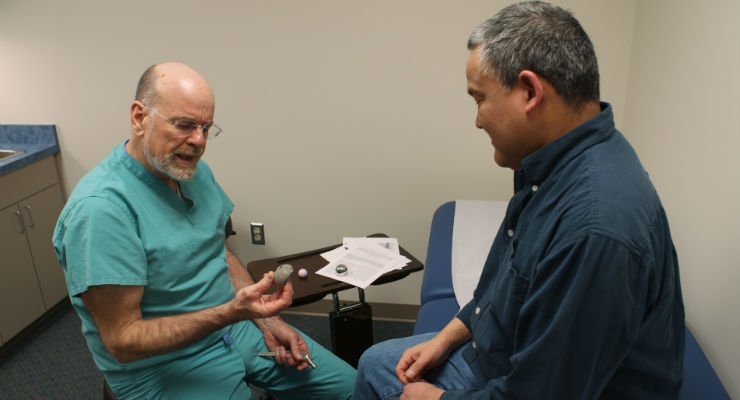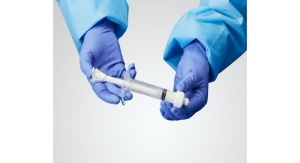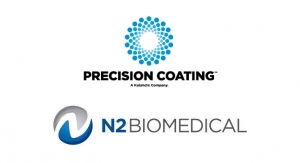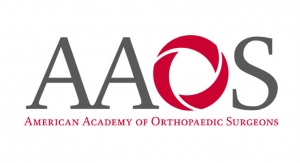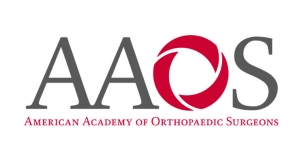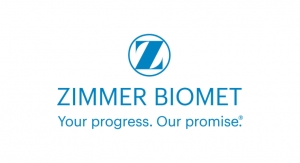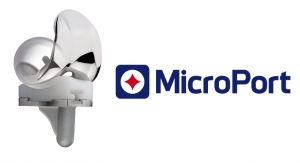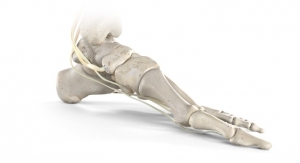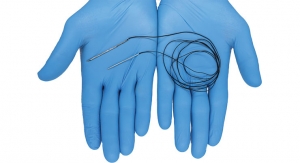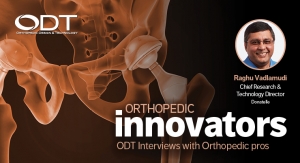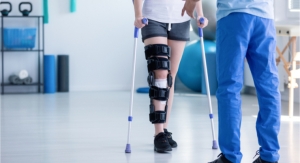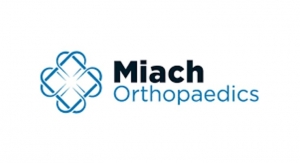Michael Barbella, Managing Editor11.30.18
“That’s the past for you. Not only does it come back at the most unexpected, and inconvenient, times but it’s set in stone.” — Jeffrey Deaver, “Edge”
If only the past remained in its rightful spot.
Life would be considerably different then—remarkably easier and infinitely more pleasant. Fewer regrets, too.
But the past rarely behaves as it should. More often than not, the days gone by find their way back to the present, infecting the here and now with unresolved matters and complicating the lives of its previous acquaintances.
The past, unfortunately, can never truly be left behind.
The medtech industry learned this valuable life lesson the hard way in 2018 as it confronted various ghosts of yesteryear: IBM, for example, instituted layoffs at its Watson Health unit as the company struggled to meet the hype over its Jeopardy!-winning supercomputer, once touted as a medical messiah. “Watson can read all of the healthcare texts in the world in seconds,” John E. Kelly III, Ph.D., IBM senior VP, Cognitive Solutions and IBM Research, told Wired in 2011. “And that’s our first priority, creating a ‘Dr. Watson,’ if you will.”
The good “doctor,” however, is still in training.
The past also haunted Boston Scientific Corp., forcing the multinational firm to defend its prior sourcing practices for transvaginal mesh implant material against allegations of wrongdoing from a “60 Minutes” report. Similarly, the U.S. Food and Drug Administration faced backlash from a vitriolic Netflix documentary questioning its long-standing 510(k) device approval process and its close ties with industry.
Meanwhile, medtech companies became the victim of their own procrastination as they raced against the clock to comply with various regulatory changes before their respective deadlines.
To gain some perspective on these hauntings and medtech’s other defining moments of 2018, join Orthopedic Design & Technology on its annual stroll down memory lane. It’s worth the trip—if only for the opportunity to visit the past in its natural habitat.
Last-Minute Storm Preparations
It won’t be long now.
Medtech’s long-dreaded regulatory maelstrom is just weeks away from landfall, and its imminent strike is inciting both fear and anxiety among companies that are still scrambling to comply with a new set of rules.
Several regulatory changes are slated to arrive in rapid succession during the first 90 days of 2019 as Health Canada imposes a Medical Device Single Audit Program (MDSAP) hard deadline, ISO registrars discard an old 13485 standard, and the United Kingdom bids a not-so-fond farewell to the European Union. “This is the perfect storm,” said Kim Trautman, executive vice president—Medical Device International Services, at NSF International, a product testing, auditing, inspection, certification, standards development, education, and risk management organization based in Ann Arbor, Mich., at the 2018 MPO Summit. “It’s a perfect storm for manufacturers, it’s a perfect storm for suppliers, and it’s a perfect storm for regulators.”
Storm preparations this year have been far less than perfect, though.
A healthy dose of procrastination (it’s human nature, after all) increased audit wait times throughout 2018, cramming regulators’ already overextended schedules and adding months to the ISO 13485:2016 certification backlog. MDSAP suitors, meanwhile, faced a slew of obstacles in their quest for compliance, including a lack of auditing organizations, resources, and training; inconsistent interpretation of audit results; premarket application reviews; misinterpretation about outsourced processes; and timely certificate issuances/receipt, according to executives with the Global Diagnostic Imaging, Healthcare IT & Radiation Therapy Trade Association.
Further muddling companies’ regulatory readiness plans this year was a surge in audit requests, rising demand for Notified Bodies (NBs), and a shrinking kitty of ISO registrars. In addition, there’s been increased scrutiny from EU Competent Authorities that has spawned stricter, more time-consuming audits; and a steady flow of regulatory changes worldwide to digest. China, for example, added 84 medical device product types and 277 in-vitro diagnostic devices to its summary clinical exemption list this year, while Egypt began requiring manufacturers (in September) to register for a broader swath of medical devices. Concurrently, the U.S. Food and Drug Administration updated its cybersecurity guidance for pre-market submissions, the Indian Pharmacopoeia Commission drafted new rules for medical device registration and regulatory compliance, and the Saudi Food and Drug Administration amended its clearance policy on medical device shipments to the country.
Perfect storm, indeed.
“Regulators, as a result, are now swamped,” Trautman noted. “Everybody is out there trying to get experts from the same pool of people. The supply and demand of Notified Bodies is just going to get worse over the period of this perfect storm.”
First up in the storm’s crosshairs is Canada, where manufacturers face a Jan. 1, 2019, deadline for transitioning to the MDSAP. Created by the International Medical Device Regulators Forum in 2013, the program aims to develop a standardized, global approach to auditing and monitoring medical device manufacturing. MDSAP streamlines international regulatory processes, enabling companies to be audited once for ISO 13485 compliance and good manufacturing practices requirements in Australia, Brazil, Canada, Japan, and the United States.
Health Canada is the only regulator among the five participating agencies to require manufacturers to undergo MDSAP audits for market entry. The Jan. 1 audit deadline—deliberately timed to coincide with the end of the three-year transition period for ISO 13485:2016 (March 1, 2019)—was originally intended as D-Day for program participants. But auditscheduling challenges (among other issues) prompted Health Canada to ease its requirements for MDSAP transitioning. In April, the agency promised not to penalize manufacturers that lack an MDSAP certificate if they can demonstrate they have undergone a program audit by Dec. 31.
No such concessions exist for ISO 13485 transitions, however. Manufacturers must meet the requirements of the updated standard by March 1, 2019, to maintain their certification. The latest incarnation not only impacts device makers, but also suppliers and other third parties that provide products or product components, including quality management system (QMS)-related services.
Key changes to the new ISO 13485 standard include:
It even applies to post-Brexit handlers in the United Kingdom. Despite generating scads of uncertainty and anxiety within the industry, experts are fairly certain the Britain-EU split (scheduled for March 30, 2019) will not impact ISO standards, since such guidelines are universally accepted and widely regarded as an effective risk management tool. Additionally, the U.K. government has made repeated statements affirming its support for the life sciences sector and its wish to maintain “frictionless trade” through continued recognition of device standards, with medical products undergoing only one set of approvals for sale in both the EU and U.K.
“There is uncertainty for all products regulated by the Medicines and Healthcare products Regulatory Agency. Brexit could be disruptive on the free flow of products,” Trautman said. “MHRA has come out with as much guidance as it can as to what [Brexit] means for the life sciences and medical device industries. They’re trying to plan but they can’t. There’s a lot of devil in the details.”
And in storm planning, too.
Read more: http://bit.ly/YIR1851
A Black Eye for Medtech
Kirby Dick is not an easily intimidated artist.
Nor is he an easily intimidated human being.
Such fearlessness has served Dick well in his professional career as he’s worked to topple social taboos and right the wrongs inflicted by powerful people and institutions. The award-winning documentary filmmaker has gained worldwide recognition and respect by exploring the edgier side of human nature, focusing specifically on “the pained, the freakish, and the inexplicable” facets of societal fringe.
Lately, however, Dick and his producing partner Amy Ziering have cross cut to a different (but still relatively unchartered) domain: institutional power. Over the last dozen years or so, the pair has panned in on entities like the Catholic Church (“Twist of Faith,” 2005), the Motion Picture Association of America (“This Film is Not Yet Rated,” 2006), the U.S. Republican Party (“Outrage,” 2009), and the U.S. military (“The Invisible War,” 2012) to expose the secrets and double-speak shrouding those organizations.
Dick and Ziering continue their assault on institutional power in “The Bleeding Edge,” a scathing indictment of the $400 billion medical device industry. The 96-minute documentary premiered to rave reviews at the 2018 Tribeca Film Festival in April and garnered further critical acclaim upon its Netflix release in late July—entertainment and media news website The Wrap called the film a “searing, if not aesthetically revelatory work,” while Variety deemed it “disturbingly powerful.”
Disturbing indeed. “The Bleeding Edge” paints an unsettling, oftentimes harrowing portrait of the device industry using a palette of patients betrayed by modern medical technology: There’s western New York mail carrier Angie Firmalino, who’s been in chronic pain since a 2009 implantation of Essure, a controversial permanent contraceptive device; and California mother of four Ana Fuentes, who lost her job, marriage, children due to complications with the same product. Then there’s Alaskan orthopedic surgeon Stephen Tower, M.D., who suffered severe metallic poisoning from an all-metal hip developed (but no longer sold) by Johnson & Johnson franchise DePuy Synthes; Kentucky nurse Tammy Jackson, who’s sacrificed a kidney, marital intimacy, and an active lifestyle to an endless cycle of pelvic mesh surgeries (21 and counting); and several women nearly disemboweled by robotic surgery (one victim claims her stomach now resembles the “Bride of Frankenstein’s”).
“‘Bleeding edge’ is a phrase often used to describe technologies that are so new that they’re untested and potentially dangerous,” Dick said in a June 27 interview with scenestertv.com. “It’s a phrase that plays off both ‘cutting edge’ and ‘leading edge.’ For us, the title connects to the lure of technology and the lure of innovation—and the rhetoric that often frames those concepts, and is intoxicating and full of promise.”
Such promise was the driving force behind each of the medical misfortunes profiled in the film. Firmalino and Fuentes, for example, were lured by Essure’s potential for permanent (hassle-free) birth control, while Tower fell victim to DePuy’s ASR XL marketing hype (less wear, longer-lasting), and Jackson succumbed to the simplicity and longevity of J&J’s pelvic mesh solution for urinary incontinence. Lori Shanyfelt, meanwhile, became hooked on robotic surgery through radio and billboard ads touting its benefits (quicker recovery, smaller incisions, less blood loss, less pain).
None of the products, however, performed as expected (or promised). Essure has been troublesome for Firmalino, Fuentes, and thousands of other women, triggering heavy bleeding, severe pain, failed pregnancies, and in some cases, perforated organs, according to the documentary. DePuy’s ASR XL hip hardly fared any better—it practically dissolved in Tower’s body and leaked cobalt, causing him to descend into madness. Problems with the hip became so widespread that DePuy recalled the product in August 2010.
Similarly, Jackson’s vaginal mesh implantation left her fatigued, wracked with pain, and barely able to walk. She’s had part of the mesh taken out, but doctors doubt she’ll ever be fully rid of the product, as full removal can be dangerous, if not impossible. “Once it’s in place, it’s not coming out—not in its entirety,” one physician told Dick and Ziering.
As for Shanyfelt, those radio and billboard ads couldn’t have been further from the truth: She bled more, contracted an infection, and experienced vaginal cuff dehiscence (a separated vaginal incision); in all, the Indiana resident underwent four surgeries in 13 months. Quicker recovery? Hardly.
“The Bleeding Edge” sews all of its patient stories together with the thread of regulatory negligence, claiming the U.S. Food and Drug Administration (FDA) lacks extensive human clinical testing requirements. The film particularly takes issue with the agency’s 510(k) approval pathway, a process by which manufacturers can market products based on their substantial equivalency to previously endorsed devices (even recalled equipment).
“The FDA is the most important consumer protection agency in the world. It regulates virtually everything that comes in contact with the human body,” former FDA Commissioner David A. Kessler (1990-1997) said on camera. “The FDA does a credible job with the vast majority of products [but] the problem is when it comes to medical devices, we built a system that doesn’t work. The [510(k)] provision, which was meant as an exception, became a loophole, and that exception became the rule. The vast majority of devices today, regrettably, are regulated under this framework.”
“I’ve called the FDA and asked them, ‘How can you clear something based on a predicate device that’s already been shown to be dangerous?’” Jeanne Lenzer tells the filmmakers. Lenzer is an award-winning, independent medical investigative journalist and author of a device industry exposé titled, “The Danger Within Us.” “They said, ‘We don’t judge what the prior device is.’ The vast majority of research is not coming from an objective source. We can no longer rely on medical device companies to do what’s in the best interest of the patient, and we can no longer rely on the FDA to regulate these devices.”
The FDA declined to be interviewed for the documentary, but Dick and Ziering give air time to Advanced Medical Technology Association (AdvaMed) CEO Scott Whitaker, who touts the effectiveness of the medical device approval pathway. “Safety is important to us. The U.S. regulatory system works well, is robust, and has been very effective,” he confidently declares in the film. “Most Americans do not give us enough credit for the innovation we bring...”
During a news conference at AdvaMed’s Annual MedTech Conference in late September, Whitaker criticized “The Bleeding Edge” for its alleged bias against the industry and called the film “more of an entertainment documentary than a fact-based documentary.” When asked directly about the documentary, Whitaker said, “If you are going to tell one side of the story, you need to tell the other side of the story too. But that narrative doesn’t play as well when you are trying to, like Netflix, draw viewers to watch this.”
Following the FDA’s lead, J&J and Intuitive Surgical Inc.—developer of the da Vinci surgical robot—also declined to be interviewed on camera for “The Bleeding Edge,” but J&J issued a brief statement to the filmmakers that read, “Your assertion that our vaginal mesh and hip products have had a negative impact on the health of patients is untrue.” The documentary, however, shows J&J executive Piet Hinoul, Ph.D., testifying under oath about his knowledge of the Prolift mesh’s “significant” retraction potential and its accompanying health-related consequences (pain, subsequent invasive surgeries).
A similar duplicity is implied with Bayer and Essure through interviews with doctors and clinical trial participants who claim the controversial device was improperly monitored during studies and not tested long enough on patients. “Essure really wasn’t tested for an efficient amount of time. It was tested 12 to 18 months, with positive results,” commented E. Scott Sills, M.D., a reproductive endocrinologist in Carlsbad, Calif., who has saved women from undergoing hysterectomies during Essure removal procedures. “For a product that is supposed to be a lifetime implant, to cut off a study window at a year and a half left a lot of questions unanswered.”
Like its rivals, Bayer declined an on-camera interview. But the company issued a scathing retort to the film’s portrayal of Essure on its Netflix premiere day, accusing Dick and Ziering of relying almost entirely on anecdotes and dissatisfied patients to paint the device in a bad light. Bayer criticized the film for ignoring the “full body of scientific evidence” that supports the FDA’s determination that Essure’s benefits outweigh its risks, including 40 published studies involving roughly 200,000 women over two decades.
“The film’s only reference to scientific data regarding Essure is the 2018 Bouillon study published in the Journal of the American Medical Association, which producers cite out of context and portray in its least favorable light,” Bayer’s fact check statement reads. “Taken as a whole, the study actually undermines the central premise of the film’s representation of Essure. The independently funded research compared women with Essure to those who had tubal ligation surgery, the only other method of permanent birth control, and found that many of the concerns described in the film with regard to Essure—pain (analgesic use) and hysterectomy—were lower in Essure patients than in tubal ligation patients at both one and three years post procedure.
The authors of the study concluded: ‘These findings do not support increased medical risks associated with hysteroscopic sterilization [e.g., Essure].’ The decision by the filmmakers to exclude highly relevant conclusions from a study they cited, apparently because they conflict with their desired narrative, does raise serious concerns about the objectivity and accuracy of the movie.”
Bayer also took issue with the film’s failure to fully disclose several sources’ ties with anti-Essure advocacy groups, and its omission of FDA-approved Instructions for Use, which provide doctors with detailed information about the product’s potential risks. Finally, and perhaps most importantly, the company partially blamed “The Bleeding Edge” for Essure’s ultimate demise after 20 years. Just seven days before the documentary premiered on Netflix, Bayer announced it was discontinuing U.S. Essure sales after Dec. 31—a decision the multinational insisted was unrelated to repeated FDA restrictions, mounting patient lawsuits, or the 12,000 FDA adverse event reports recorded by the agency last year.
The decision, according to Bayer, was strictly business—specifically, weak sales brought on by fewer proponents of permanent birth control and bad (read: “misleading”) publicity about Essure. “Our decision was not based on concerns about the safety and efficacy of Essure,” Bayer stated in an open letter to patients and providers in late July. “Essure has been on the market for more than 15 years and has been successfully used by hundreds of thousands of women.”
Dick and Ziering hailed Bayer’s decision, calling it a “gratifying affirmation of the power of documentary.” Said Dick, “This is exactly why we do this work: This film has already changed policies and changed history.”
Mission accomplished.
Read more: http://bit.ly/odt181099
A New Source of Angst
Maybe next year.
Or maybe not.
Maybe sometime over the next 365-plus days, someone somewhere in the nation’s capital—a Congress member, presumably—will try again. And maybe this time, the results will be different.
Maybe this time, things will work out.
Or maybe not.
Maybe the ordeal will finally end.
Or maybe not.
Welcome to the Land of Limbo, where life is perpetually stuck in neutral. The medtech sector marked another year of residency in this strange, frustrating world by maintaining its death watch vigil for the 2.3 percent medical device tax. The industry has been trying to kill the unpopular levy since its inclusion in national healthcare reform in 2010.
Life in Limbo Land turned unusually titillating, however, with the tax’s brief reincarnation through legislative inaction. Lawmakers suspended the levy for two years at the end of 2015 but did not extend the deferral upon its Jan. 1 (2018) expiration (the Tax Cuts and Jobs Act passage in December 2017 repealed some parts of Obamacare, yet left the medical device tax intact).
The medtech industry was not happy.
“My CEOs are frustrated,” AdvaMed president and CEO Scott Whitaker told The Star-Tribune (Minnesota) late last year. “My industry is frustrated. They are frustrated with the people in Congress who say the right thing when we meet with them. Then, when we leave, they don’t do anything about it.”
The industry’s frustration was short-lived, though, as Congress quickly corrected the oversight and suspended the device tax until 2020 through passage of a stopgap spending bill in late January that ended a federal government shutdown.
Hence, life in Limbo Land returned to normal. The medtech industry was happy again.
“AdvaMed applauds passage of the two-year suspension of the medical device tax,” Whitaker said after Congress passed its spending plan. “This suspension is good news for American patients and American innovation.”
Good, but not great news, howbeit.
“While the two-year suspension is welcome,” Whitaker continued, “it is only an interim step toward the truly needed action by Congress to fully repeal this tax and unleash the promise of medtech innovation. We look forward to continuing to work with the Hill on a bipartisan basis to drive toward permanent relief.”
And so began the waiting game. Again.
The vigil resumed. Again.
Ending the vigil, however, will require more than constant pressure from industry and lip service from Congress. It calls for the discovery (or creation) of an alternative funding source to offset the estimated $20 billion that potentially would be lost by repealing the device tax (the two-year moratorium alone is estimated to cost the U.S. government about $3.7 billion, according to industry data).
Such a source was realized early this year through proposed legislation that would end roughly $29 billion in tax breaks for oil and gas companies over the next decade. Devised by Massachusetts senators Ed Markey and Elizabeth Warren (both Democrats), the bill was introduced to the U.S. Senate on Jan. 10 and immediately referred to the Finance Committee.
An encouraging sign, certainly.
Maybe this was it. Maybe, after eight years and more than a dozen visits to the hallowed halls of Congress, the medical device tax was finally in its final stages of life.
Maybe the vigil would soon be over.
Or maybe not: Markey and Warren’s legislation still awaits action in the Senate Finance Committee.
The vigil continued.
Then, in late July, the industry had reason to hope again: The U.S. House of Representatives voted to repeal the device tax and sent the measure to the Senate for its blessing. Once again, AdvaMed’s Whitaker sang lawmakers’ praises, and once again, he urged them to kill the levy.
And once again, he waited for Congress to deliver a final death blow to the tax.
He and other industry bigwigs are still waiting.
The vigil continues.
As Whitaker and industry waited this year for Congress to compose the final chapter in the long-winded device tax saga, another formidable tale was being written by Presidents Donald Trump and Xi Jinping that could inhibit medtech finances.
The U.S.-China trade war began slowly, first impacting only solar panels and washing machines imported from the Middle Kingdom. Medical devices were thrown into the mix in the spring, and by late summer—in response to various counteroffensive moves by the White House—Beijing slapped tariffs on $1.12 billion in American medical devices.
China followed up its summer blitz with an early-autumn bout of tariffs that raised the total value of medtech product duties to $4.7 billion, according to AdvaMed. The latest tariffs cover “almost all remaining U.S. medical technology exports to China, plus possible non-tariff measures” such as delayed regulatory approval, tendering discrimination, the organization noted in a presentation at its annual conference in September.
Trump’s tariffs affect mostly China-made component parts for devices, somewhat softening the blow for manufacturers that rely on direct product imports. And while the full impact of the war has yet to be felt, the standoff is already prompting some medtech firms to reconsider their outsourcing and general business models.
“The U.S.-led trade war implications have upended medical device cost models not only for contract manufacturing, but also component sourcing as a whole, with China markets taking the biggest hit,” Patrick Lynch, supply chain director for Tear Film Innovations Inc., told ODT. The early-stage company develops products for treating evaporative dry eye and related syndromes.
“Sizable landed cost increases of 5 [percent] to 15 percent have forced renegotiations, and in some cases, subsequent sourcing efforts to move production to new suppliers as a means of offsetting the tariffs, which have created a backlog of sourcing projects, including reshoring, identifying new suppliers and performing qualifications, and insourcing (make vs. buy). Our experience has shown these past several months that incumbent suppliers, sensitive to the customer’s cost impact, have provided some relief, allowing a portion of cost increases to be recovered. However, best results have been achieved by initiating new RFQs.”
Some industry sources expect the trade war to discourage finished good assembly in China and potentially spawn more reshoring efforts.
“As a way to avoid tariffs, companies may use China as a component supplier and move finished goods assembly out to other countries,” said industry consultant Tony Mulone, a former vice president/general manager at Covidien. “This could help U.S.- and Mexico-based contract manufacturers gain back lost OEM medical device business.”
It might, but not in its current form. To be truly beneficial to American companies, the trade war must open Chinese markets to a larger amount of U.S. goods, contends Susan Mucha, president of Powell-Mucha Consulting Inc., a management consultancy focused on the electronic manufacturing services sector.
“The unintended consequences of placing a tariff on electronic components is incentivizing migration of U.S. manufacturing to Mexico and other parts of the world,” she explained. “If the tariff situation is short-lived or it is adjusted to impact only finished goods, it will be good for U.S. manufacturing if it helps open Chinese markets to a larger amount of U.S. goods and reduce unfair trade practices. However, if it continues as it is currently written through 2019, I think it will impact U.S. manufacturing growth negatively.”
AdvaMed is lending its literary skills to the Trump administration to minimize the trade war’s impact on the industry. So far, the organization and medtech firms have effectively lobbied the administration’s U.S. Trade Representative to limit the number of products subjected to tariffs. But future success is not guaranteed, especially if the trade war escalates.
“If the trade war escalates and continues to grow, there will be more impact,” Whitaker said.
Maybe.
Then again, maybe not.
Maybe it’s time to start another vigil.
Read more: http://bit.ly/YIR1855
All in With Tuck-Ins
The rumor seemed to come out of nowhere, catching even the most well-connected analysts off-guard. Within hours, the Internet was ablaze with speculation: “Bos Sci, Stryker silent on potential talks of a takeover bid,” Cardiovascular Business reported. “Stryker Offer May Trigger Billions in Deal Making,” noted The Wall Street Journal. “Boston Scientific: Any Bid Would Have to Be Above $40/Share,” mused streetinsider.com.
And so on: “4 Reasons Why Boston Scientific is a Screaming Buy” (Forbes).
And so on: “Stryker sees merger with Boston Scientific as a healthy move,” (British national daily The Times).
And so on: “Boston Scientific Halted on Stryker Takeover Approach” (benziga.com).
The lack of comment from both companies only fueled conjecture of a likely deal, though it also spawned lots of questions. “Is Stryker Trying to Strike a Deal with Boston Scientific?” one industry publication asked amid all the hearsay.
No, actually, it wasn’t. Not at all.
Stryker itself put the rumors to rest after two days of rampant speculation, telling the U.S. Securities and Exchange Commission in a June 13 filing that it was “not in discussions with Boston Scientific regarding a potential acquisition.” The company added that it broke its longstanding “no comment” protocol to end market speculation spawned by a June 11 Journal article.
But speculation continued nonetheless.
“The filing from Stryker states that the company is not in discussions with Boston Scientific,” Jason Benowitz, senior portfolio manager at Roosevelt Investment Group, told Reuters. “It does not deny that prior discussions took place. Putting together a deal for Boston Scientific that creates value for Stryker shareholders would be a challenging high-wire act.”
Perhaps, but such a deal would have injected a bit of zeal into an otherwise unexceptional M&A market this year. Lacking the blockbuster pairings that defined past eras, the 2018 landscape was dominated largely by smaller tuck-in deals that enhanced purchasers’ existing capabilities or opened up new avenues for growth. Zavation, for example, added a full suite of minimally invasive surgical devices to its existing spinal hardware and biologics lineup with the purchase of Pan Medical, while IZI Medical Products boosted its vertebroplasty and bone biopsy offering through the purchase of Benvenue Medical’s vertebral augmentation systems portfolio.
“Historically, the industry has used M&A to bolster near-term revenue growth,” EY life sciences analysts state in the firm’s 12th edition “Pulse of the Industry” report. “The data suggest that in 2017-18 medtech’s commercial leaders focused on tuck-in acquisitions that added scale in areas of therapeutic interest.”
And there were numerous areas of interest: Intraoperative neuromonitoring appealed to Alphatec Spine (which acquired SafeOp Surgical Inc.), whereas silicon nitride (SiNi) technology charmed CTL Medical, which bought Amedica’s spine business, including access to all future SiNi spinal innovation. Likewise, cervical/lumbar disc technology attracted Orthofix to Spinal Kinetics Inc., developer of the CE-marked M6-C cervical and M6-L lumbar artificial discs for degenerative disc disease treatment. The devices mimic the structure of a natural disc by using an artificial visco-elastic nucleus and fiber annulus that provides 6 degrees of motion, similar to a natural disc.
Contrarily, toe osteoarthritis matched Wright Medical Group N.V. with Cartiva, augmenting the former’s Extremities business with the latter’s premarket-approved Synthetic Cartilage Implant (SCI) for high-volume foot and ankle procedures. Comprised of biocompatible organic polymer, the implant is similar in functionality to natural cartilage and is designed to reduce joint pain while retaining natural movement, mobility, and motion range.
Interbody devices, meanwhile, lured CoreLink LLC and Fuse Medical Inc. to Expanding Orthopedics Inc. and Maxim Surgical, respectively. Expanding Orthopedics’ expanding and articulating FLXfit and FLXfit 15 titanium interbody systems are cleared by the U.S. Food and Drug Administration to provide structural stability in total or partial discectomies; Maxim Surgical’s line of spinal interbody spacers, on the other hand, includes the X-Treme Interbody Fusion System, a cervical solution comprised of neutral and lordotic cages in two footprints with varying heights for assorted patient anatomies. The X-Treme System can be implanted as a single device through an anterior approach.
“Having commercial scale not only improves a company’s capital efficiency by building expertise in specific therapeutic areas,” EY’s “Pulse” report notes, “but also gives companies the ability to deepen their offerings by, for instance, building value-added services and forming closer relationships with end-users to improve product development.”
Stryker Corp. gained some massive commercial scale bulk in 2018 through four deals that strengthened its capabilities and offerings in spine, neurotechnology, surgical instruments, and smoke evacuation solutions. Its $1.4 billion purchase of K2M Group Holdings Inc. was one of the year’s largest transactions (second only to Medtronic plc’s bid for Mazor Robotics), and enhanced the company’s spinal and minimally invasive device portfolios, as well as its additive manufacturing capabilities.
Although Stryker’s other acquisitions failed to match the K2M deal value, they nonetheless were equally as important to the multinational’s long-term growth strategy. The company complemented its surgical instrument lineup with Invuity’s single-use instruments and illumination devices (a $190 million deal), and SafeAir’s “smoke pen,” a disposable diathermy pencil that directly pulls smoke from cauterization procedures. It also expanded its market share in dural repair with the $220 million purchase of HyperBranch Medical Technology Inc., developer of one of two U.S. Food and Drug Administration-approved dural sealants.
With its four acquisitions, Stryker surprisingly outpaced its rivals in deal volume. The closest runners-up were Johnson & Johnson (three buys) and RTI Surgical Inc. (two transactions). J&J purchased Orthotaxy, Emerging Implant Technologies, and Medical Enterprises Distribution LLC; the Orthotaxy deal broadens J&J’s robotic-assisted surgical proficiencies, whereas Emerging Implant Technologies and Medical Enterprises Distribution expand DePuy Synthes’ lineup of interbody implants and hip replacement offerings, respectively.
Tuck-in logic also benefited RTI Surgical Inc., which diversified its spine portfolio with deals for Zyga Technology and Paradigm Spine ($300 million); and Globus Medical Inc., which beefed up its ExcelsiusGPS navigation and robotic system capabilities with the acquisition of Nemaris, developer of pre-operative spine surgery planning software.
“Some companies, such as Boston Scientific, have been very active this year,” PNC Capital Advisors analyst Luyi Guo said, “but not all have been as active...”
Not all were focused on volume, though: Medtronic brokered a large-scale deal ($1.6 billion) to boost its market share in surgical robotics (purchasing Mazor Robotics), while Colfax Corporation diversified its overall product portfolio by purchasing DJO Global for $3.15 billion in cash (easily the segment’s largest deal in 2018). Others, like J&J and Bioventus, opted to slim down rather than bulk up: J&J divested its Advanced Sterilization Products unit for $2.7 billion, while Bioventus sold its next-generation bone morphogenetic protein development program to New York, N.Y.-based venture capital firm Viscogliosi Bros. LLC.
“While there was not a big blockbuster deal of industry giants [in 2018], there continued to be significant acquisitions of innovative companies (with huge relative valuations) by large strategics,” said Dave Sheppard, principal at Andover, Mass.-based business management consulting firm MedWorld Advisors. “2019 might be the year where there are large crossover acquisitions between traditional consumer/industrial technology companies and traditional medtech companies.”
More speculation for the rumor mill.
Read more: http://bit.ly/YIR1856
Interested in further insights on the major headlines and happenings in the orthopedic industry in 2018 or care to see what industry leaders are saying about what to expect in 2019? Click here to read the Sounding Board featuring responses from members of the ODT Editorial Board.
If only the past remained in its rightful spot.
Life would be considerably different then—remarkably easier and infinitely more pleasant. Fewer regrets, too.
But the past rarely behaves as it should. More often than not, the days gone by find their way back to the present, infecting the here and now with unresolved matters and complicating the lives of its previous acquaintances.
The past, unfortunately, can never truly be left behind.
The medtech industry learned this valuable life lesson the hard way in 2018 as it confronted various ghosts of yesteryear: IBM, for example, instituted layoffs at its Watson Health unit as the company struggled to meet the hype over its Jeopardy!-winning supercomputer, once touted as a medical messiah. “Watson can read all of the healthcare texts in the world in seconds,” John E. Kelly III, Ph.D., IBM senior VP, Cognitive Solutions and IBM Research, told Wired in 2011. “And that’s our first priority, creating a ‘Dr. Watson,’ if you will.”
The good “doctor,” however, is still in training.
The past also haunted Boston Scientific Corp., forcing the multinational firm to defend its prior sourcing practices for transvaginal mesh implant material against allegations of wrongdoing from a “60 Minutes” report. Similarly, the U.S. Food and Drug Administration faced backlash from a vitriolic Netflix documentary questioning its long-standing 510(k) device approval process and its close ties with industry.
Meanwhile, medtech companies became the victim of their own procrastination as they raced against the clock to comply with various regulatory changes before their respective deadlines.
To gain some perspective on these hauntings and medtech’s other defining moments of 2018, join Orthopedic Design & Technology on its annual stroll down memory lane. It’s worth the trip—if only for the opportunity to visit the past in its natural habitat.
Last-Minute Storm Preparations
It won’t be long now.
Medtech’s long-dreaded regulatory maelstrom is just weeks away from landfall, and its imminent strike is inciting both fear and anxiety among companies that are still scrambling to comply with a new set of rules.
Several regulatory changes are slated to arrive in rapid succession during the first 90 days of 2019 as Health Canada imposes a Medical Device Single Audit Program (MDSAP) hard deadline, ISO registrars discard an old 13485 standard, and the United Kingdom bids a not-so-fond farewell to the European Union. “This is the perfect storm,” said Kim Trautman, executive vice president—Medical Device International Services, at NSF International, a product testing, auditing, inspection, certification, standards development, education, and risk management organization based in Ann Arbor, Mich., at the 2018 MPO Summit. “It’s a perfect storm for manufacturers, it’s a perfect storm for suppliers, and it’s a perfect storm for regulators.”
Storm preparations this year have been far less than perfect, though.
A healthy dose of procrastination (it’s human nature, after all) increased audit wait times throughout 2018, cramming regulators’ already overextended schedules and adding months to the ISO 13485:2016 certification backlog. MDSAP suitors, meanwhile, faced a slew of obstacles in their quest for compliance, including a lack of auditing organizations, resources, and training; inconsistent interpretation of audit results; premarket application reviews; misinterpretation about outsourced processes; and timely certificate issuances/receipt, according to executives with the Global Diagnostic Imaging, Healthcare IT & Radiation Therapy Trade Association.
Further muddling companies’ regulatory readiness plans this year was a surge in audit requests, rising demand for Notified Bodies (NBs), and a shrinking kitty of ISO registrars. In addition, there’s been increased scrutiny from EU Competent Authorities that has spawned stricter, more time-consuming audits; and a steady flow of regulatory changes worldwide to digest. China, for example, added 84 medical device product types and 277 in-vitro diagnostic devices to its summary clinical exemption list this year, while Egypt began requiring manufacturers (in September) to register for a broader swath of medical devices. Concurrently, the U.S. Food and Drug Administration updated its cybersecurity guidance for pre-market submissions, the Indian Pharmacopoeia Commission drafted new rules for medical device registration and regulatory compliance, and the Saudi Food and Drug Administration amended its clearance policy on medical device shipments to the country.
Perfect storm, indeed.
“Regulators, as a result, are now swamped,” Trautman noted. “Everybody is out there trying to get experts from the same pool of people. The supply and demand of Notified Bodies is just going to get worse over the period of this perfect storm.”
First up in the storm’s crosshairs is Canada, where manufacturers face a Jan. 1, 2019, deadline for transitioning to the MDSAP. Created by the International Medical Device Regulators Forum in 2013, the program aims to develop a standardized, global approach to auditing and monitoring medical device manufacturing. MDSAP streamlines international regulatory processes, enabling companies to be audited once for ISO 13485 compliance and good manufacturing practices requirements in Australia, Brazil, Canada, Japan, and the United States.
Health Canada is the only regulator among the five participating agencies to require manufacturers to undergo MDSAP audits for market entry. The Jan. 1 audit deadline—deliberately timed to coincide with the end of the three-year transition period for ISO 13485:2016 (March 1, 2019)—was originally intended as D-Day for program participants. But auditscheduling challenges (among other issues) prompted Health Canada to ease its requirements for MDSAP transitioning. In April, the agency promised not to penalize manufacturers that lack an MDSAP certificate if they can demonstrate they have undergone a program audit by Dec. 31.
No such concessions exist for ISO 13485 transitions, however. Manufacturers must meet the requirements of the updated standard by March 1, 2019, to maintain their certification. The latest incarnation not only impacts device makers, but also suppliers and other third parties that provide products or product components, including quality management system (QMS)-related services.
Key changes to the new ISO 13485 standard include:
- Incorporating risk-based approaches beyond product realization. Risk is considered in the context of the safety and performance of the medical device and in meeting regulatory requirements
- More linkage with regulatory requirements, particularly for regulatory documentation
- Application to organizations throughout the lifecycle and medical device supply chain
- Harmonizing software validation requirements for different software applications (QMS and process control software, as well as monitoring and measurement software) in different clauses of the standard
- Planning and documenting corrective action and preventive action, and implementing corrective action without undue delay
- Emphasis on appropriate infrastructure, particularly for the production of sterile medical devices, and additional requirements for validating sterile barrier properties
- Additional requirements in design, development, and consideration of usability, use of standards, verification and validation planning, design transfer, and design records
- Emphasis on complaint handling and reporting to regulatory authorities in accordance with regulatory requirements, and post-market surveillance consideration.
It even applies to post-Brexit handlers in the United Kingdom. Despite generating scads of uncertainty and anxiety within the industry, experts are fairly certain the Britain-EU split (scheduled for March 30, 2019) will not impact ISO standards, since such guidelines are universally accepted and widely regarded as an effective risk management tool. Additionally, the U.K. government has made repeated statements affirming its support for the life sciences sector and its wish to maintain “frictionless trade” through continued recognition of device standards, with medical products undergoing only one set of approvals for sale in both the EU and U.K.
“There is uncertainty for all products regulated by the Medicines and Healthcare products Regulatory Agency. Brexit could be disruptive on the free flow of products,” Trautman said. “MHRA has come out with as much guidance as it can as to what [Brexit] means for the life sciences and medical device industries. They’re trying to plan but they can’t. There’s a lot of devil in the details.”
And in storm planning, too.
Read more: http://bit.ly/YIR1851
A Black Eye for Medtech
Kirby Dick is not an easily intimidated artist.
Nor is he an easily intimidated human being.
Such fearlessness has served Dick well in his professional career as he’s worked to topple social taboos and right the wrongs inflicted by powerful people and institutions. The award-winning documentary filmmaker has gained worldwide recognition and respect by exploring the edgier side of human nature, focusing specifically on “the pained, the freakish, and the inexplicable” facets of societal fringe.
Lately, however, Dick and his producing partner Amy Ziering have cross cut to a different (but still relatively unchartered) domain: institutional power. Over the last dozen years or so, the pair has panned in on entities like the Catholic Church (“Twist of Faith,” 2005), the Motion Picture Association of America (“This Film is Not Yet Rated,” 2006), the U.S. Republican Party (“Outrage,” 2009), and the U.S. military (“The Invisible War,” 2012) to expose the secrets and double-speak shrouding those organizations.
Dick and Ziering continue their assault on institutional power in “The Bleeding Edge,” a scathing indictment of the $400 billion medical device industry. The 96-minute documentary premiered to rave reviews at the 2018 Tribeca Film Festival in April and garnered further critical acclaim upon its Netflix release in late July—entertainment and media news website The Wrap called the film a “searing, if not aesthetically revelatory work,” while Variety deemed it “disturbingly powerful.”
Disturbing indeed. “The Bleeding Edge” paints an unsettling, oftentimes harrowing portrait of the device industry using a palette of patients betrayed by modern medical technology: There’s western New York mail carrier Angie Firmalino, who’s been in chronic pain since a 2009 implantation of Essure, a controversial permanent contraceptive device; and California mother of four Ana Fuentes, who lost her job, marriage, children due to complications with the same product. Then there’s Alaskan orthopedic surgeon Stephen Tower, M.D., who suffered severe metallic poisoning from an all-metal hip developed (but no longer sold) by Johnson & Johnson franchise DePuy Synthes; Kentucky nurse Tammy Jackson, who’s sacrificed a kidney, marital intimacy, and an active lifestyle to an endless cycle of pelvic mesh surgeries (21 and counting); and several women nearly disemboweled by robotic surgery (one victim claims her stomach now resembles the “Bride of Frankenstein’s”).
“‘Bleeding edge’ is a phrase often used to describe technologies that are so new that they’re untested and potentially dangerous,” Dick said in a June 27 interview with scenestertv.com. “It’s a phrase that plays off both ‘cutting edge’ and ‘leading edge.’ For us, the title connects to the lure of technology and the lure of innovation—and the rhetoric that often frames those concepts, and is intoxicating and full of promise.”
Such promise was the driving force behind each of the medical misfortunes profiled in the film. Firmalino and Fuentes, for example, were lured by Essure’s potential for permanent (hassle-free) birth control, while Tower fell victim to DePuy’s ASR XL marketing hype (less wear, longer-lasting), and Jackson succumbed to the simplicity and longevity of J&J’s pelvic mesh solution for urinary incontinence. Lori Shanyfelt, meanwhile, became hooked on robotic surgery through radio and billboard ads touting its benefits (quicker recovery, smaller incisions, less blood loss, less pain).
None of the products, however, performed as expected (or promised). Essure has been troublesome for Firmalino, Fuentes, and thousands of other women, triggering heavy bleeding, severe pain, failed pregnancies, and in some cases, perforated organs, according to the documentary. DePuy’s ASR XL hip hardly fared any better—it practically dissolved in Tower’s body and leaked cobalt, causing him to descend into madness. Problems with the hip became so widespread that DePuy recalled the product in August 2010.
Similarly, Jackson’s vaginal mesh implantation left her fatigued, wracked with pain, and barely able to walk. She’s had part of the mesh taken out, but doctors doubt she’ll ever be fully rid of the product, as full removal can be dangerous, if not impossible. “Once it’s in place, it’s not coming out—not in its entirety,” one physician told Dick and Ziering.
As for Shanyfelt, those radio and billboard ads couldn’t have been further from the truth: She bled more, contracted an infection, and experienced vaginal cuff dehiscence (a separated vaginal incision); in all, the Indiana resident underwent four surgeries in 13 months. Quicker recovery? Hardly.
“The Bleeding Edge” sews all of its patient stories together with the thread of regulatory negligence, claiming the U.S. Food and Drug Administration (FDA) lacks extensive human clinical testing requirements. The film particularly takes issue with the agency’s 510(k) approval pathway, a process by which manufacturers can market products based on their substantial equivalency to previously endorsed devices (even recalled equipment).
“The FDA is the most important consumer protection agency in the world. It regulates virtually everything that comes in contact with the human body,” former FDA Commissioner David A. Kessler (1990-1997) said on camera. “The FDA does a credible job with the vast majority of products [but] the problem is when it comes to medical devices, we built a system that doesn’t work. The [510(k)] provision, which was meant as an exception, became a loophole, and that exception became the rule. The vast majority of devices today, regrettably, are regulated under this framework.”
“I’ve called the FDA and asked them, ‘How can you clear something based on a predicate device that’s already been shown to be dangerous?’” Jeanne Lenzer tells the filmmakers. Lenzer is an award-winning, independent medical investigative journalist and author of a device industry exposé titled, “The Danger Within Us.” “They said, ‘We don’t judge what the prior device is.’ The vast majority of research is not coming from an objective source. We can no longer rely on medical device companies to do what’s in the best interest of the patient, and we can no longer rely on the FDA to regulate these devices.”
The FDA declined to be interviewed for the documentary, but Dick and Ziering give air time to Advanced Medical Technology Association (AdvaMed) CEO Scott Whitaker, who touts the effectiveness of the medical device approval pathway. “Safety is important to us. The U.S. regulatory system works well, is robust, and has been very effective,” he confidently declares in the film. “Most Americans do not give us enough credit for the innovation we bring...”
During a news conference at AdvaMed’s Annual MedTech Conference in late September, Whitaker criticized “The Bleeding Edge” for its alleged bias against the industry and called the film “more of an entertainment documentary than a fact-based documentary.” When asked directly about the documentary, Whitaker said, “If you are going to tell one side of the story, you need to tell the other side of the story too. But that narrative doesn’t play as well when you are trying to, like Netflix, draw viewers to watch this.”
Following the FDA’s lead, J&J and Intuitive Surgical Inc.—developer of the da Vinci surgical robot—also declined to be interviewed on camera for “The Bleeding Edge,” but J&J issued a brief statement to the filmmakers that read, “Your assertion that our vaginal mesh and hip products have had a negative impact on the health of patients is untrue.” The documentary, however, shows J&J executive Piet Hinoul, Ph.D., testifying under oath about his knowledge of the Prolift mesh’s “significant” retraction potential and its accompanying health-related consequences (pain, subsequent invasive surgeries).
A similar duplicity is implied with Bayer and Essure through interviews with doctors and clinical trial participants who claim the controversial device was improperly monitored during studies and not tested long enough on patients. “Essure really wasn’t tested for an efficient amount of time. It was tested 12 to 18 months, with positive results,” commented E. Scott Sills, M.D., a reproductive endocrinologist in Carlsbad, Calif., who has saved women from undergoing hysterectomies during Essure removal procedures. “For a product that is supposed to be a lifetime implant, to cut off a study window at a year and a half left a lot of questions unanswered.”
Like its rivals, Bayer declined an on-camera interview. But the company issued a scathing retort to the film’s portrayal of Essure on its Netflix premiere day, accusing Dick and Ziering of relying almost entirely on anecdotes and dissatisfied patients to paint the device in a bad light. Bayer criticized the film for ignoring the “full body of scientific evidence” that supports the FDA’s determination that Essure’s benefits outweigh its risks, including 40 published studies involving roughly 200,000 women over two decades.
“The film’s only reference to scientific data regarding Essure is the 2018 Bouillon study published in the Journal of the American Medical Association, which producers cite out of context and portray in its least favorable light,” Bayer’s fact check statement reads. “Taken as a whole, the study actually undermines the central premise of the film’s representation of Essure. The independently funded research compared women with Essure to those who had tubal ligation surgery, the only other method of permanent birth control, and found that many of the concerns described in the film with regard to Essure—pain (analgesic use) and hysterectomy—were lower in Essure patients than in tubal ligation patients at both one and three years post procedure.
The authors of the study concluded: ‘These findings do not support increased medical risks associated with hysteroscopic sterilization [e.g., Essure].’ The decision by the filmmakers to exclude highly relevant conclusions from a study they cited, apparently because they conflict with their desired narrative, does raise serious concerns about the objectivity and accuracy of the movie.”
Bayer also took issue with the film’s failure to fully disclose several sources’ ties with anti-Essure advocacy groups, and its omission of FDA-approved Instructions for Use, which provide doctors with detailed information about the product’s potential risks. Finally, and perhaps most importantly, the company partially blamed “The Bleeding Edge” for Essure’s ultimate demise after 20 years. Just seven days before the documentary premiered on Netflix, Bayer announced it was discontinuing U.S. Essure sales after Dec. 31—a decision the multinational insisted was unrelated to repeated FDA restrictions, mounting patient lawsuits, or the 12,000 FDA adverse event reports recorded by the agency last year.
The decision, according to Bayer, was strictly business—specifically, weak sales brought on by fewer proponents of permanent birth control and bad (read: “misleading”) publicity about Essure. “Our decision was not based on concerns about the safety and efficacy of Essure,” Bayer stated in an open letter to patients and providers in late July. “Essure has been on the market for more than 15 years and has been successfully used by hundreds of thousands of women.”
Dick and Ziering hailed Bayer’s decision, calling it a “gratifying affirmation of the power of documentary.” Said Dick, “This is exactly why we do this work: This film has already changed policies and changed history.”
Mission accomplished.
Read more: http://bit.ly/odt181099
A New Source of Angst
Maybe next year.
Or maybe not.
Maybe sometime over the next 365-plus days, someone somewhere in the nation’s capital—a Congress member, presumably—will try again. And maybe this time, the results will be different.
Maybe this time, things will work out.
Or maybe not.
Maybe the ordeal will finally end.
Or maybe not.
Welcome to the Land of Limbo, where life is perpetually stuck in neutral. The medtech sector marked another year of residency in this strange, frustrating world by maintaining its death watch vigil for the 2.3 percent medical device tax. The industry has been trying to kill the unpopular levy since its inclusion in national healthcare reform in 2010.
Life in Limbo Land turned unusually titillating, however, with the tax’s brief reincarnation through legislative inaction. Lawmakers suspended the levy for two years at the end of 2015 but did not extend the deferral upon its Jan. 1 (2018) expiration (the Tax Cuts and Jobs Act passage in December 2017 repealed some parts of Obamacare, yet left the medical device tax intact).
The medtech industry was not happy.
“My CEOs are frustrated,” AdvaMed president and CEO Scott Whitaker told The Star-Tribune (Minnesota) late last year. “My industry is frustrated. They are frustrated with the people in Congress who say the right thing when we meet with them. Then, when we leave, they don’t do anything about it.”
The industry’s frustration was short-lived, though, as Congress quickly corrected the oversight and suspended the device tax until 2020 through passage of a stopgap spending bill in late January that ended a federal government shutdown.
Hence, life in Limbo Land returned to normal. The medtech industry was happy again.
“AdvaMed applauds passage of the two-year suspension of the medical device tax,” Whitaker said after Congress passed its spending plan. “This suspension is good news for American patients and American innovation.”
Good, but not great news, howbeit.
“While the two-year suspension is welcome,” Whitaker continued, “it is only an interim step toward the truly needed action by Congress to fully repeal this tax and unleash the promise of medtech innovation. We look forward to continuing to work with the Hill on a bipartisan basis to drive toward permanent relief.”
And so began the waiting game. Again.
The vigil resumed. Again.
Ending the vigil, however, will require more than constant pressure from industry and lip service from Congress. It calls for the discovery (or creation) of an alternative funding source to offset the estimated $20 billion that potentially would be lost by repealing the device tax (the two-year moratorium alone is estimated to cost the U.S. government about $3.7 billion, according to industry data).
Such a source was realized early this year through proposed legislation that would end roughly $29 billion in tax breaks for oil and gas companies over the next decade. Devised by Massachusetts senators Ed Markey and Elizabeth Warren (both Democrats), the bill was introduced to the U.S. Senate on Jan. 10 and immediately referred to the Finance Committee.
An encouraging sign, certainly.
Maybe this was it. Maybe, after eight years and more than a dozen visits to the hallowed halls of Congress, the medical device tax was finally in its final stages of life.
Maybe the vigil would soon be over.
Or maybe not: Markey and Warren’s legislation still awaits action in the Senate Finance Committee.
The vigil continued.
Then, in late July, the industry had reason to hope again: The U.S. House of Representatives voted to repeal the device tax and sent the measure to the Senate for its blessing. Once again, AdvaMed’s Whitaker sang lawmakers’ praises, and once again, he urged them to kill the levy.
And once again, he waited for Congress to deliver a final death blow to the tax.
He and other industry bigwigs are still waiting.
The vigil continues.
As Whitaker and industry waited this year for Congress to compose the final chapter in the long-winded device tax saga, another formidable tale was being written by Presidents Donald Trump and Xi Jinping that could inhibit medtech finances.
The U.S.-China trade war began slowly, first impacting only solar panels and washing machines imported from the Middle Kingdom. Medical devices were thrown into the mix in the spring, and by late summer—in response to various counteroffensive moves by the White House—Beijing slapped tariffs on $1.12 billion in American medical devices.
China followed up its summer blitz with an early-autumn bout of tariffs that raised the total value of medtech product duties to $4.7 billion, according to AdvaMed. The latest tariffs cover “almost all remaining U.S. medical technology exports to China, plus possible non-tariff measures” such as delayed regulatory approval, tendering discrimination, the organization noted in a presentation at its annual conference in September.
Trump’s tariffs affect mostly China-made component parts for devices, somewhat softening the blow for manufacturers that rely on direct product imports. And while the full impact of the war has yet to be felt, the standoff is already prompting some medtech firms to reconsider their outsourcing and general business models.
“The U.S.-led trade war implications have upended medical device cost models not only for contract manufacturing, but also component sourcing as a whole, with China markets taking the biggest hit,” Patrick Lynch, supply chain director for Tear Film Innovations Inc., told ODT. The early-stage company develops products for treating evaporative dry eye and related syndromes.
“Sizable landed cost increases of 5 [percent] to 15 percent have forced renegotiations, and in some cases, subsequent sourcing efforts to move production to new suppliers as a means of offsetting the tariffs, which have created a backlog of sourcing projects, including reshoring, identifying new suppliers and performing qualifications, and insourcing (make vs. buy). Our experience has shown these past several months that incumbent suppliers, sensitive to the customer’s cost impact, have provided some relief, allowing a portion of cost increases to be recovered. However, best results have been achieved by initiating new RFQs.”
Some industry sources expect the trade war to discourage finished good assembly in China and potentially spawn more reshoring efforts.
“As a way to avoid tariffs, companies may use China as a component supplier and move finished goods assembly out to other countries,” said industry consultant Tony Mulone, a former vice president/general manager at Covidien. “This could help U.S.- and Mexico-based contract manufacturers gain back lost OEM medical device business.”
It might, but not in its current form. To be truly beneficial to American companies, the trade war must open Chinese markets to a larger amount of U.S. goods, contends Susan Mucha, president of Powell-Mucha Consulting Inc., a management consultancy focused on the electronic manufacturing services sector.
“The unintended consequences of placing a tariff on electronic components is incentivizing migration of U.S. manufacturing to Mexico and other parts of the world,” she explained. “If the tariff situation is short-lived or it is adjusted to impact only finished goods, it will be good for U.S. manufacturing if it helps open Chinese markets to a larger amount of U.S. goods and reduce unfair trade practices. However, if it continues as it is currently written through 2019, I think it will impact U.S. manufacturing growth negatively.”
AdvaMed is lending its literary skills to the Trump administration to minimize the trade war’s impact on the industry. So far, the organization and medtech firms have effectively lobbied the administration’s U.S. Trade Representative to limit the number of products subjected to tariffs. But future success is not guaranteed, especially if the trade war escalates.
“If the trade war escalates and continues to grow, there will be more impact,” Whitaker said.
Maybe.
Then again, maybe not.
Maybe it’s time to start another vigil.
Read more: http://bit.ly/YIR1855
All in With Tuck-Ins
The rumor seemed to come out of nowhere, catching even the most well-connected analysts off-guard. Within hours, the Internet was ablaze with speculation: “Bos Sci, Stryker silent on potential talks of a takeover bid,” Cardiovascular Business reported. “Stryker Offer May Trigger Billions in Deal Making,” noted The Wall Street Journal. “Boston Scientific: Any Bid Would Have to Be Above $40/Share,” mused streetinsider.com.
And so on: “4 Reasons Why Boston Scientific is a Screaming Buy” (Forbes).
And so on: “Stryker sees merger with Boston Scientific as a healthy move,” (British national daily The Times).
And so on: “Boston Scientific Halted on Stryker Takeover Approach” (benziga.com).
The lack of comment from both companies only fueled conjecture of a likely deal, though it also spawned lots of questions. “Is Stryker Trying to Strike a Deal with Boston Scientific?” one industry publication asked amid all the hearsay.
No, actually, it wasn’t. Not at all.
Stryker itself put the rumors to rest after two days of rampant speculation, telling the U.S. Securities and Exchange Commission in a June 13 filing that it was “not in discussions with Boston Scientific regarding a potential acquisition.” The company added that it broke its longstanding “no comment” protocol to end market speculation spawned by a June 11 Journal article.
But speculation continued nonetheless.
“The filing from Stryker states that the company is not in discussions with Boston Scientific,” Jason Benowitz, senior portfolio manager at Roosevelt Investment Group, told Reuters. “It does not deny that prior discussions took place. Putting together a deal for Boston Scientific that creates value for Stryker shareholders would be a challenging high-wire act.”
Perhaps, but such a deal would have injected a bit of zeal into an otherwise unexceptional M&A market this year. Lacking the blockbuster pairings that defined past eras, the 2018 landscape was dominated largely by smaller tuck-in deals that enhanced purchasers’ existing capabilities or opened up new avenues for growth. Zavation, for example, added a full suite of minimally invasive surgical devices to its existing spinal hardware and biologics lineup with the purchase of Pan Medical, while IZI Medical Products boosted its vertebroplasty and bone biopsy offering through the purchase of Benvenue Medical’s vertebral augmentation systems portfolio.
“Historically, the industry has used M&A to bolster near-term revenue growth,” EY life sciences analysts state in the firm’s 12th edition “Pulse of the Industry” report. “The data suggest that in 2017-18 medtech’s commercial leaders focused on tuck-in acquisitions that added scale in areas of therapeutic interest.”
And there were numerous areas of interest: Intraoperative neuromonitoring appealed to Alphatec Spine (which acquired SafeOp Surgical Inc.), whereas silicon nitride (SiNi) technology charmed CTL Medical, which bought Amedica’s spine business, including access to all future SiNi spinal innovation. Likewise, cervical/lumbar disc technology attracted Orthofix to Spinal Kinetics Inc., developer of the CE-marked M6-C cervical and M6-L lumbar artificial discs for degenerative disc disease treatment. The devices mimic the structure of a natural disc by using an artificial visco-elastic nucleus and fiber annulus that provides 6 degrees of motion, similar to a natural disc.
Contrarily, toe osteoarthritis matched Wright Medical Group N.V. with Cartiva, augmenting the former’s Extremities business with the latter’s premarket-approved Synthetic Cartilage Implant (SCI) for high-volume foot and ankle procedures. Comprised of biocompatible organic polymer, the implant is similar in functionality to natural cartilage and is designed to reduce joint pain while retaining natural movement, mobility, and motion range.
Interbody devices, meanwhile, lured CoreLink LLC and Fuse Medical Inc. to Expanding Orthopedics Inc. and Maxim Surgical, respectively. Expanding Orthopedics’ expanding and articulating FLXfit and FLXfit 15 titanium interbody systems are cleared by the U.S. Food and Drug Administration to provide structural stability in total or partial discectomies; Maxim Surgical’s line of spinal interbody spacers, on the other hand, includes the X-Treme Interbody Fusion System, a cervical solution comprised of neutral and lordotic cages in two footprints with varying heights for assorted patient anatomies. The X-Treme System can be implanted as a single device through an anterior approach.
“Having commercial scale not only improves a company’s capital efficiency by building expertise in specific therapeutic areas,” EY’s “Pulse” report notes, “but also gives companies the ability to deepen their offerings by, for instance, building value-added services and forming closer relationships with end-users to improve product development.”
Stryker Corp. gained some massive commercial scale bulk in 2018 through four deals that strengthened its capabilities and offerings in spine, neurotechnology, surgical instruments, and smoke evacuation solutions. Its $1.4 billion purchase of K2M Group Holdings Inc. was one of the year’s largest transactions (second only to Medtronic plc’s bid for Mazor Robotics), and enhanced the company’s spinal and minimally invasive device portfolios, as well as its additive manufacturing capabilities.
Although Stryker’s other acquisitions failed to match the K2M deal value, they nonetheless were equally as important to the multinational’s long-term growth strategy. The company complemented its surgical instrument lineup with Invuity’s single-use instruments and illumination devices (a $190 million deal), and SafeAir’s “smoke pen,” a disposable diathermy pencil that directly pulls smoke from cauterization procedures. It also expanded its market share in dural repair with the $220 million purchase of HyperBranch Medical Technology Inc., developer of one of two U.S. Food and Drug Administration-approved dural sealants.
With its four acquisitions, Stryker surprisingly outpaced its rivals in deal volume. The closest runners-up were Johnson & Johnson (three buys) and RTI Surgical Inc. (two transactions). J&J purchased Orthotaxy, Emerging Implant Technologies, and Medical Enterprises Distribution LLC; the Orthotaxy deal broadens J&J’s robotic-assisted surgical proficiencies, whereas Emerging Implant Technologies and Medical Enterprises Distribution expand DePuy Synthes’ lineup of interbody implants and hip replacement offerings, respectively.
Tuck-in logic also benefited RTI Surgical Inc., which diversified its spine portfolio with deals for Zyga Technology and Paradigm Spine ($300 million); and Globus Medical Inc., which beefed up its ExcelsiusGPS navigation and robotic system capabilities with the acquisition of Nemaris, developer of pre-operative spine surgery planning software.
“Some companies, such as Boston Scientific, have been very active this year,” PNC Capital Advisors analyst Luyi Guo said, “but not all have been as active...”
Not all were focused on volume, though: Medtronic brokered a large-scale deal ($1.6 billion) to boost its market share in surgical robotics (purchasing Mazor Robotics), while Colfax Corporation diversified its overall product portfolio by purchasing DJO Global for $3.15 billion in cash (easily the segment’s largest deal in 2018). Others, like J&J and Bioventus, opted to slim down rather than bulk up: J&J divested its Advanced Sterilization Products unit for $2.7 billion, while Bioventus sold its next-generation bone morphogenetic protein development program to New York, N.Y.-based venture capital firm Viscogliosi Bros. LLC.
“While there was not a big blockbuster deal of industry giants [in 2018], there continued to be significant acquisitions of innovative companies (with huge relative valuations) by large strategics,” said Dave Sheppard, principal at Andover, Mass.-based business management consulting firm MedWorld Advisors. “2019 might be the year where there are large crossover acquisitions between traditional consumer/industrial technology companies and traditional medtech companies.”
More speculation for the rumor mill.
Read more: http://bit.ly/YIR1856
Interested in further insights on the major headlines and happenings in the orthopedic industry in 2018 or care to see what industry leaders are saying about what to expect in 2019? Click here to read the Sounding Board featuring responses from members of the ODT Editorial Board.

